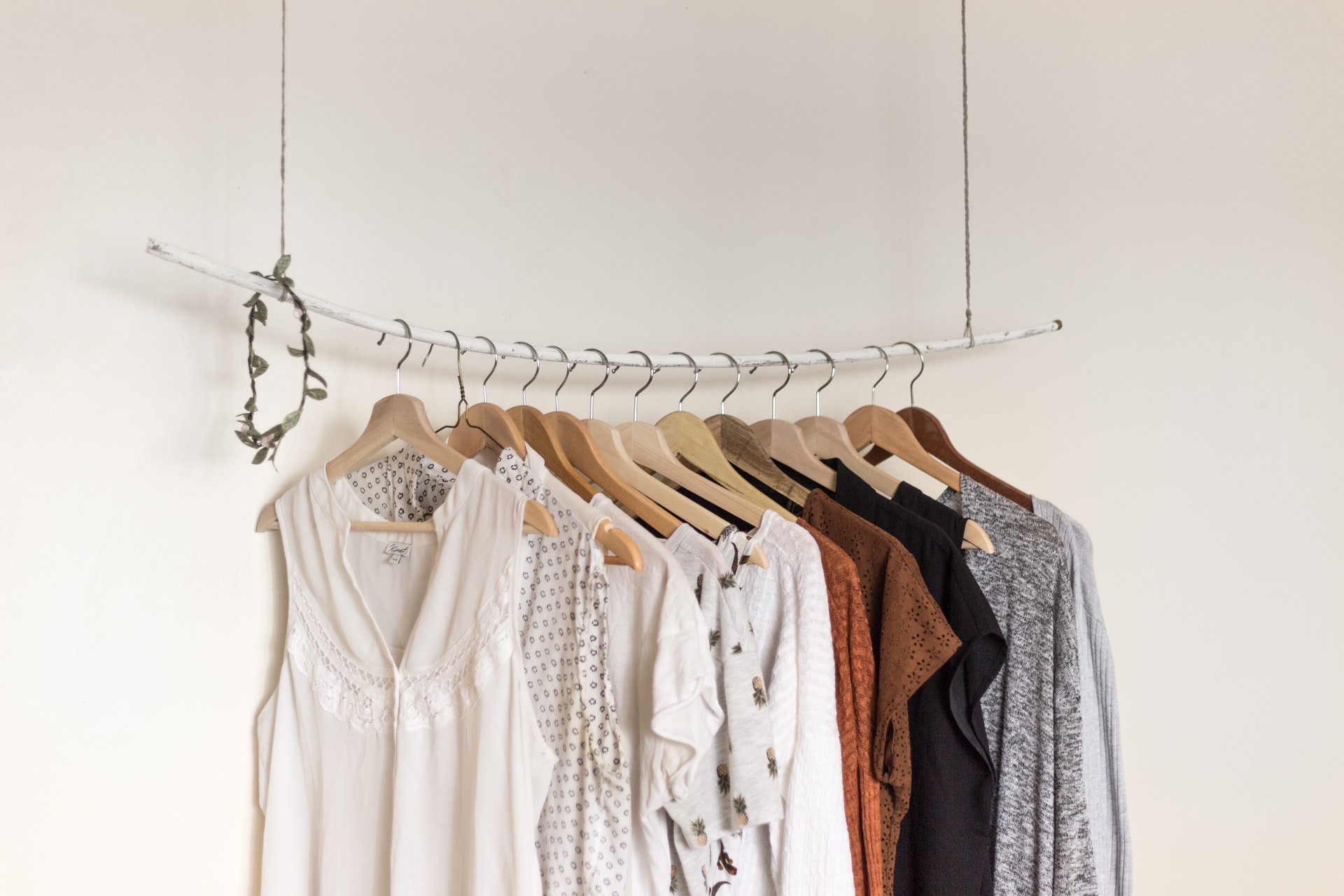
Living in a tropical climate poses a long list of challenges, both inside and outside of the home. High heat and humidity throughout the year, monsoon rain seasons, and poor building conditions can all add up to a lot of troubles for food, books and paper items, and clothing stored inside your closets, cupboards and cabinets.
I have decided to compile a list of quick tips for keeping things fabulous in the land of the wardrobe when living in a humid, tropical locale. Public Enemy No. 1 is mold/mildew. Depending on the situation in your home with respect to humidity and air flow, this can be a monstrous problem which can threaten the very life of your Vera Wang party smocks! Here is how I keep ‘the white beast’ from getting me down:
– Quarterly inspections: Every three months, I go through every article of clothing and all accessories (hanging up and in drawers), inspecting all sides, top and bottom, for signs of mildew. You will either see white, green or grayish powdery spots, or will be able to pick up a smell reminiscent of your grandma’s closet full of items which had not been worn or washed since 1943.
–Air out/dry out: First choice would be to store your clothing in the driest room of the house/apartment. We do not have room to do this completely, but we do keep our most expensive items in the guest room where it is always high and dry – formal wear, Scottish kilt ensembles, suits, saris, etc. Otherwise, if your wardrobe has doors on it, keep them open for an hour or two each day to let the air circulate. We have a dehumidifier (electric appliance which removes moisture from the air) which I keep right in front of my wardrobe and have running during waking hours. This helps keep the immediate vicinity much drier than the rest of the apartment.
–Wipe out: As part of my weekly dusting routine, I give a quick wipe down to the surfaces in the wardrobe with an anti-bacterial spray, not only for dust, but to snatch up any mold or mildew spores which might be settling in.
–Rotate: If you haven’t worn something in a while, why not throw it on this morning? If things get washed or dry cleaned and are part of the regular rotation, they are much less likely to have mold take over their surfaces. Stay on top of things by keeping all items fresh and clean. The easiest way to do this is by regularly wearing each item! This is a good reason to be a minimalist and get rid of clothing that you no longer find yourself wearing. Most tropical regions of the world have more than enough people living in poverty that you will have no trouble finding someone who will gladly accept donations of your extra good-condition clothing. If you don’t know anyone personally, try taking them to your nearest orphanage, church, temple, shelter, or expat women’s club, who will know how to best distribute them.
–Lock down: If you have any items which are valuable, either in sentimental or actual currency, seal those babies up in Zip-Lock bags, garment bags, or air-tight containers before they begin to mold. If mold spores can’t get to them, the items will not mold! However, if you have waited too long to do this, it might be too late to be effective. I would recommend you sealing up all lovely things before you move to the tropics, if possible.
–Go vegan! I have found that by far, the items which mold are made from animal products – silk, wool and leather. This might be a compelling reason to veganize your wardrobe! Don’t get me wrong, we have had cotton and synthetic fabrics mold, just nowhere nearly as often as the animal derivatives.
What to do if you do find mold or mildew:
1. Bin it, baby! If you don’t care about the item anymore anyway, why not just get rid of it? Better not to have any repeat offenders that you don’t wear or use. I find that if an item molds once, it is at a much higher risk of molding again, as compared to other items.
2. Fire up the washer! If the item is something that you can wash in the washing machine, load it up and let it spin! Most washable fabrics like cotton will be good as new after a standard washing, drying and ironing. Just keep one eye on it over the next few months to make sure it does not mold again.
3. Have it treated. If you are talking about formal dresses, fabrics which should not be getting wet such as wool or silk, or shoes with lots of embellishments, for example, it is best to have the professionals take care of them. It might set you back a pretty penny, but not as much as having to replace the items with new versions. We have had numerous things treated, from Kevin’s Scottish kilt hose and sporran, some of my fancy-pants shoes, to winter coats, and nothing that has been treated has re-molded. Tell the cleaners that you want the item cleaned and specially treated for mold.
I have had much success cleaning leather shoes (I still have some old non-vegan shoes kicking around here) by making a solution of olive oil with a splash of white vinegar. It smells to high heaven, but once it is rubbed into the leather and the vinegar evaporates or is absorbed (or a bit of both!), the smell dissipates. The items that I have treated with this solution have all failed to re-mold. I also use this concoction on wooden objects with near-similar success rates.
Another tactic that I have taken a liking to is lacquering. Get your fine DIY self a can of clear vinyl spray, and after you have cleaned your item AND it has fully dried, lacquer the crud out of it (I find that a few light, even coats look best when dry, as opposed to one thick coat). This works well with shoes which are covered in cloth, inexpensive accessories and the like. I also have used it for the cloth covers of books which had been molding, as well as all the Orthodox Christian icons in my home iconostasis. Please do this outside on some sort of old sheet – the fumes are pretty potent, and any spray that lands out-with your object will leave a sticky film that’s difficult to remove.
Happy cleaning! If you have any tips to share for wardrobe upkeep in a hot and humid environment, please leave a comment below!
See my other post in the Expat Survival Series: What to Bring, House Hunting, How to Fly With a Baby, and How to Prepare For an Urban Flood.
*Photo by Priscilla Du Preez on Unsplash
Some of the links on this page may be affiliate links. Jennifer M.S. Robertson, LLC is a participant in the Amazon Services LLC Associates Program, an affiliate advertising program designed to provide a means for us to earn advertising fees by linking to products mentioned. If you purchase a product through an affiliate link, your cost will be the same, but Jennifer M.S. Robertson, LLC will automatically receive a small commission.


Great ideas. I hope my clothes don’t get moldy, I am concerned for the summer so I will use some of your storage ideas and try the dehumidifier too. Hope you are feeling better.
Hi Bitt! I don’t think the dehumidifier will be too expensive in the US. I have seen them on Amazon for a reasonable amount. If we could afford it, I would have one here in every room! It is amazing/shocking the amount of water they remove! We noticed a HUGE difference once we got ours.